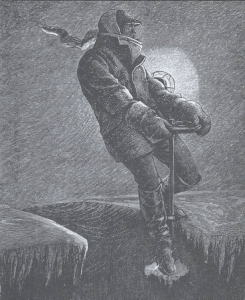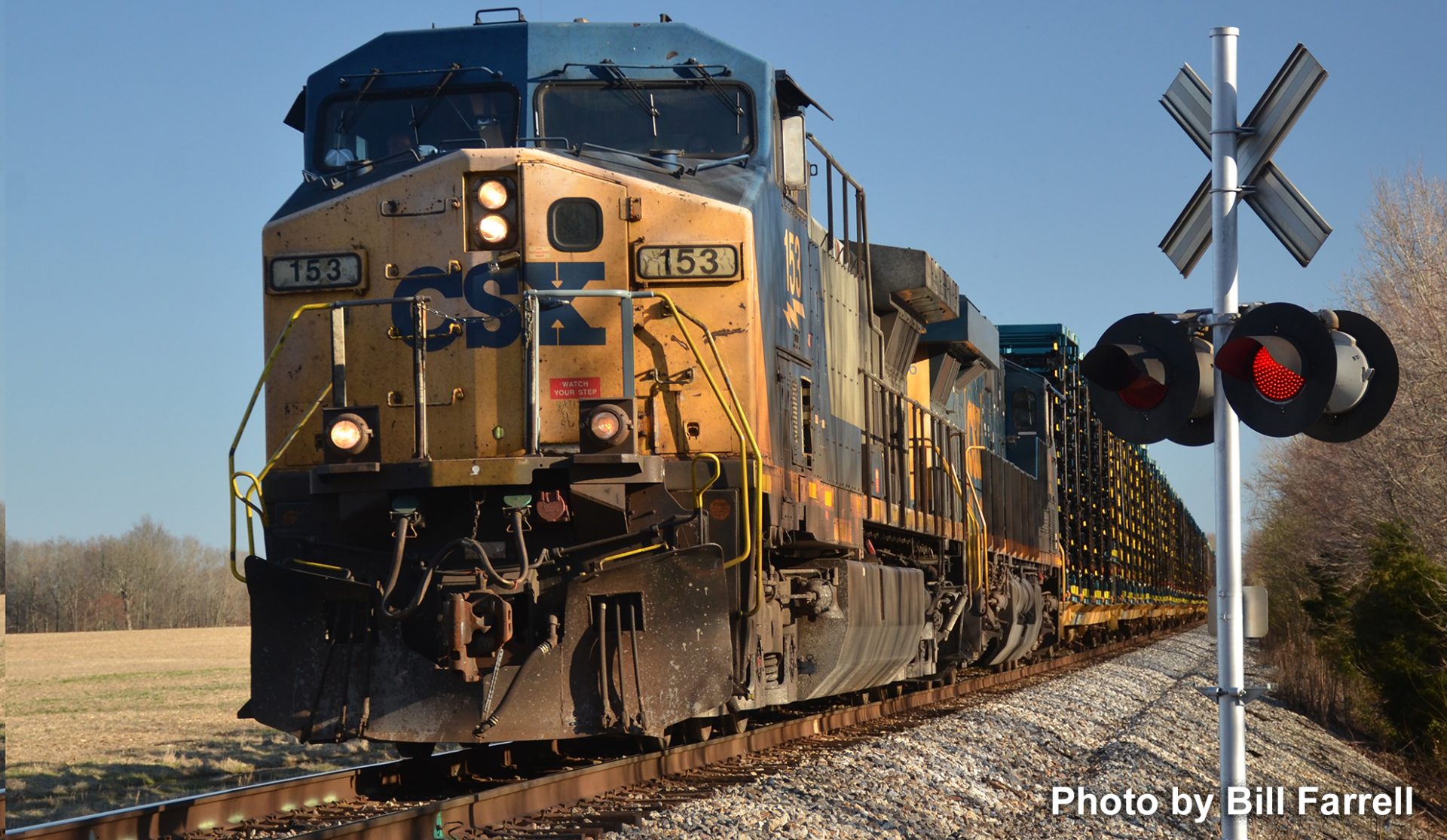 Yes, last week’s story of the perils of the early-day brakemen included a “walk-in-the-park” picture. The brakeman was enjoying the majestic palisades of the Mississippi in SW Wisconsin. Such relaxing was not always the case. Just look at the ice and snow this brakeman endured in helping to slow and stop a moving train.
Yes, last week’s story of the perils of the early-day brakemen included a “walk-in-the-park” picture. The brakeman was enjoying the majestic palisades of the Mississippi in SW Wisconsin. Such relaxing was not always the case. Just look at the ice and snow this brakeman endured in helping to slow and stop a moving train.
The drawing by O. V. Schubert appeared in Harper’s Weekly in the 1880s. Note the lantern, kerosene no doubt, a handle with a hoop large enough to slide up his arm. No need to set it down, and if you did it would never be seen again.
Lanterns aren’t used much today, and no one need climb to the top of moving box cars. Crews doing switching movements are communicating via hand-held radio. Inventions of Air-Brakes by George Westinghouse, and Knuckle-Couplers by Major Eli Janney were patented in 1869 and 68. Sadly, the railroads were not mandated by a Federal law to so equip their rolling stock until 1893. Even so the Railroads were slow to implement these safety features. Many brakemen never arrived at the destination terminal, and few switchmen had all their fingers, having had to manually couple cars with links and pins.
On the narrow-gauge lines in Colorado some safety features were not installed until into the 1920s. You can to this day see Telltales fronting tunnels on the Cumbres & Toltec Scenic Railway, a mighty fine ride.
